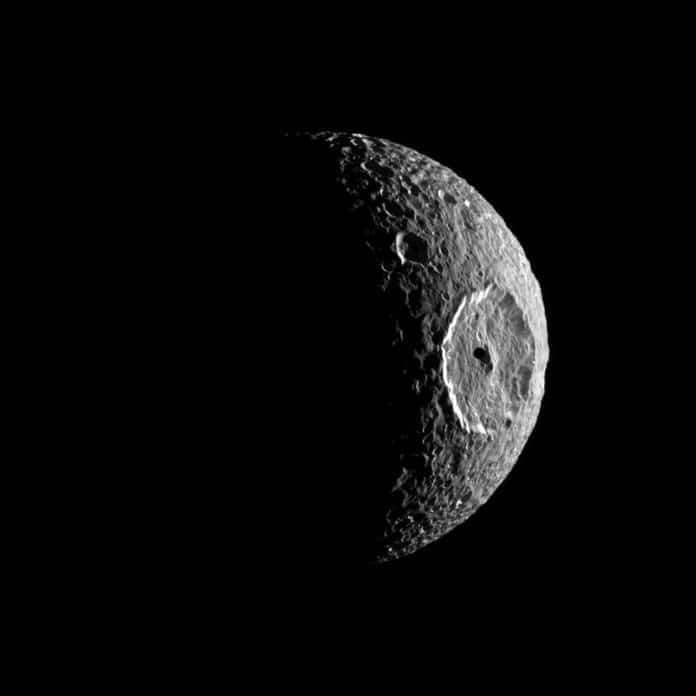Saturn has 82 moons. They range in size from larger than the planet Mercury. Recently, NASA took Twitter to share an image of Saturn’s Moon Mimas, captured by the Cassini spacecraft.
Discovered on Sept. 17, 1789, by English astronomer William Herschel, using his 40-foot reflector telescope, Mimas is the smallest and innermost of Saturn’s major moons. It is less than 123 miles (198 kilometers) in the mean radius. It is somewhat ovoid with dimensions of 129 x 122 x 119 miles (207 x 197 x 191 kilometers, respectively).
Mimas is located over 115,000 miles (186,000 kilometers) from Saturn. It takes 22 hours and 36 minutes to complete an orbit. Like the Moon is tidally locked to the Earth, the Mimas is also tidally locked to the Saturn, keeping the same face toward the planet.
A giant impact crater called Herschel is one of its intriguing features. It is 80 miles (130 kilometers) across – one-third of the diameter of the Moon itself – with outer walls about 3 miles (5 kilometers) high and a central peak 3.5 miles (6 km) high.
The Cassini spacecraft made several close approaches and provided detailed images of Mimas.
NASA mentioned in a tweet, “That’s no moon. Oh, wait. Yes. Yes, it is.”
In another tweet, NASA said, “If you stood in that giant crater, you wouldn’t see any space lasers…but you’d have one epic view of Saturn.”
